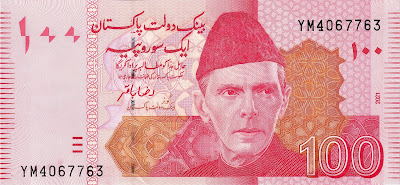Available for Sale, 20 stamps from UK with motifs of the late Queen Elizabeth, the entire lot is sold for $150 negotiable dollars, we accept PayPal, Western Union or MoneyGram, interested parties write to me on:
WhatsApp +507 63685135
Available for Sale, 20 stamps from UK with motifs of the late Queen Elizabeth, the entire lot is sold for $150 negotiable dollars, we accept PayPal, Western Union or MoneyGram, interested parties write to me on:
WhatsApp +507 63685135
We invite you to purchase this beautiful batch of stamps that brother Syed Ilyas Ali Roomi from Pakistan is selling, you can contact him on WhatsApp +92 330 1621914
We invite you to purchase this beautiful batch of stamps that brother Syed Ilyas Ali Roomi from Pakistan is selling, you can contact him on WhatsApp +92 330 1621914
Postcards, those tiny windows into the past, hold a charm that transcends generations. Originating in the mid-19th century, postcards have evolved from simple correspondence tools to cherished collectibles, offering glimpses into the cultural, social, and historical landscapes of bygone eras.
The first known postcard dates back to 1840s Austria, where writer Theodore Hook sent a hand-painted card to himself as a practical joke. However, it wasn't until the 1860s that the concept gained traction with the advent of the official postal card. These early postcards featured printed images on one side and space for a message and address on the other, evolving into the familiar format we recognize today.
The late 19th and early 20th centuries witnessed a golden age of postcards, fueled by advancements in printing technology and a burgeoning interest in travel and communication. Postcards became popular souvenirs for travelers, capturing iconic landmarks, scenic vistas, and cultural snapshots from around the world. Artists and photographers embraced the medium, producing an array of visually stunning designs that reflected the zeitgeist of their time.
Beyond their role in communication, postcards have become coveted collectibles for enthusiasts worldwide. The allure lies not only in their aesthetic appeal but also in the stories they tell. Each postcard is a tangible piece of history, preserving moments, sentiments, and glimpses of everyday life from decades past.
Collecting postcards offers a unique avenue for exploration and discovery. Whether focusing on a specific theme, such as vintage travel or architectural landmarks, or seeking rare and unusual designs, collectors can delve into a vast and diverse universe of imagery and narrative.
The value of postcards for collectors extends beyond monetary considerations. They serve as portals to the past, fostering connections to distant places and bygone eras. Holding a century-old postcard is akin to holding a piece of time itself, evoking nostalgia, curiosity, and a sense of wonder.
In today's digital age, where communication is often fleeting and ephemeral, the enduring appeal of postcards endures. They remain timeless artifacts that bridge the gap between past and present, offering a tangible link to history and a testament to the enduring power of human connection. Whether tucked away in an album or proudly displayed, postcards continue to captivate hearts and minds, reminding us of the beauty and significance of the written word and the enduring allure of the past.
The Bosnian Dinar holds a significant place in the economic history of Bosnia and Herzegovina, serving as the official currency during a transformative period in the country's development. Originating from the breakup of Yugoslavia, the Bosnian Dinar played a crucial role in shaping Bosnia's economic landscape before being replaced by other currencies.
Following the disintegration of Yugoslavia in the early 1990s, Bosnia and Herzegovina emerged as an independent nation. In the midst of political upheaval and armed conflict, the Bosnian Dinar was introduced in 1992 as the official currency of the newly formed Bosnian state. The Dinar was issued by the Central Bank of Bosnia and Herzegovina, established to oversee monetary policy and regulate the country's financial system.
However, the Bosnian Dinar's existence was short-lived. The currency faced significant challenges due to hyperinflation and economic instability wrought by the Bosnian War. As a result, its value rapidly depreciated, leading to a loss of confidence among both domestic and international investors. In response, Bosnia and Herzegovina transitioned to alternative currencies, including the Deutsche Mark and later the Convertible Mark, to restore stability and confidence in the financial system.
Today, the Bosnian Dinar exists primarily as a relic of Bosnia's tumultuous past, serving as a reminder of the challenges faced during the country's transition to independence. While no longer in circulation, the Bosnian Dinar holds historical significance, symbolizing a pivotal period in Bosnia's history of nation-building and economic reconstruction.
Despite its limited role in contemporary economic affairs, the legacy of the Bosnian Dinar endures as a testament to the resilience of the Bosnian people in the face of adversity. Its story serves as a reminder of the importance of stability and prudent monetary policy in fostering economic growth and prosperity in Bosnia and Herzegovina.
The Pakistani rupee (PKR) is the official currency of Pakistan, a country with a history marked by its independence from British rule and ...
.jpg)